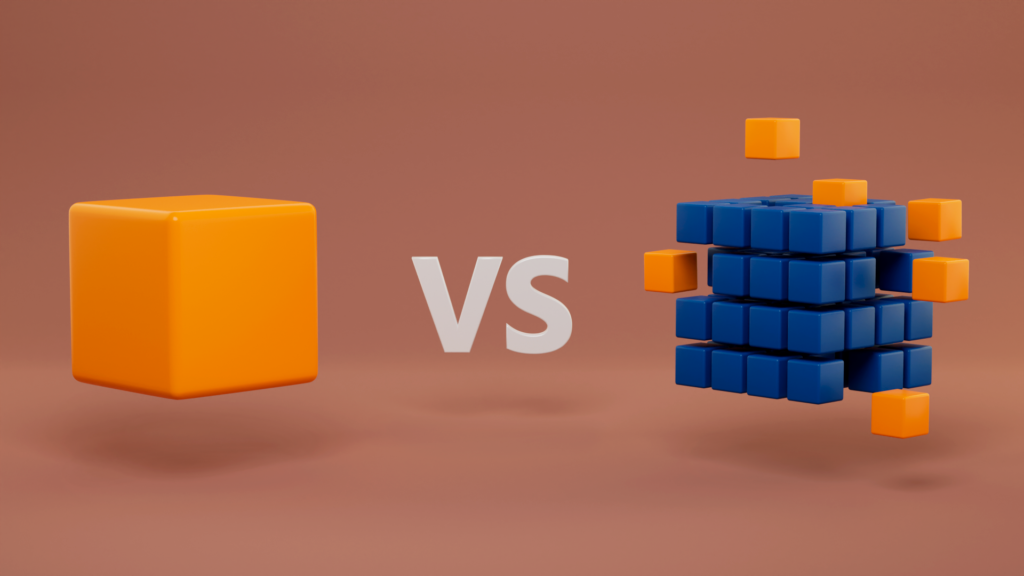Understanding Blockchain Architecture
Blockchain architecture defines how transactions are processed, stored, and verified. Traditionally, blockchains were monolithic systems where all functions occurred within a single structure. Modular blockchains are a new paradigm that separates these functions into various layers.
To compare both models correctly, it’s necessary to analyze their major components:
|
Component |
Monolithic Blockchains |
Modular Blockchains |
|
Execution |
On-chain |
Separated into layers |
|
Consensus |
On-chain |
Offloaded to separate chains |
|
Data Storage |
On-chain |
Distributed across networks |
|
Scalability |
Limited |
High scalability with L2 solutions |
|
Flexibility |
Low |
High, customizable networks |
This table highlights the key differences between these blockchain structures. Now, let’s explore each model in detail.
What Are Monolithic Blockchains?
Monolithic blockchains manage all tasks within a single network. They handle execution, consensus, and data storage together. This structure ensures strong security and decentralization but often struggles with scalability.
Key Characteristics of Monolithic Blockchains:
- Single-Layer Structure: Every transaction is processed, validated, and stored on the same chain.
- Strong Security: Since all operations occur on a unified network, security remains high.
- Limited Scalability: The system processes transactions sequentially, leading to network congestion.
- Decentralized: Validators and nodes share responsibility, ensuring network stability.
- Examples: Bitcoin, Solana, and Ethereum (before Layer 2 scaling solutions).
Monolithic blockchains have been the backbone of Web3 but struggle to support high transaction volumes efficiently.
What Are Modular Blockchains?
Modular blockchains separate the core functions of execution, consensus, and data storage. Instead of processing everything on a single chain, different layers handle specific tasks. This model enhances scalability and efficiency while maintaining security.
Key Characteristics of Modular Blockchains:
- Layered Structure: Tasks are split across different blockchain layers.
- Improved Scalability: L2 solutions handle transactions off-chain, reducing congestion.
- Customizable Networks: Developers can create blockchains optimized for specific needs.
- Interoperability: Different blockchain components can communicate across networks.
- Examples: Ethereum (with rollups like Optimism and Arbitrum), Celestia, and Polygon.
Ethereum scaling solutions, such as rollups, rely on modularity to enhance performance. This approach allows the network to grow without sacrificing security or decentralization.
Pros and Cons of Each Model
Both blockchain architectures have advantages and trade-offs. Below is a comparison of their strengths and weaknesses:
|
Feature |
Monolithic Blockchains |
Modular Blockchains |
|
Security |
High |
Moderate to high (depends on implementation) |
|
Scalability |
Low |
High with L2 solutions |
|
Decentralization |
Strong |
Varies by design |
|
Performance |
Slower due to congestion |
Faster execution with L2 scaling |
|
Development Flexibility |
Limited |
High customization |
|
Complexity |
Easier to implement |
More complex but efficient |
Monolithic blockchains offer simplicity and security but struggle with scaling. Modular blockchains provide better performance and flexibility but require additional complexity to manage separate layers.
Which Model Will Dominate Web3?
The future of blockchain technology depends on demand for scalability, security, and decentralization. Web3 applications require networks that can support millions of users without compromising performance. Here’s why modular blockchains may become the dominant model:
- Scalability Is a Priority – High transaction fees and congestion in monolithic networks push developers toward modular solutions.
- Ethereum’s Influence – Ethereum’s transition to Layer 2 scaling through rollups signals a major shift toward modularity.
- Custom Blockchain Design – Developers can create application-specific blockchains using modular frameworks.
- Better User Experience – Faster transactions and lower fees attract more users and developers.
However, monolithic blockchains won’t disappear. Some projects value simplicity and security over scalability. Networks like Bitcoin will continue to operate as monolithic systems, ensuring decentralized value transfer.
Modular and monolithic blockchains are both contributors to Web3. Monolithic systems allow for decentralization and security, but modular blockchains facilitate scalability and flexibility. The rise of Ethereum scaling solutions like L2 rollups shows a growing preference for modular architecture.
As development blockchain technology keeps moving forward, modular architectures will likely become ubiquitous in Web3 apps. The most suitable arrangement will, however, depend on developers’ and users’ certain demands. Knowing such models is helping navigate blockchain development’s future.

